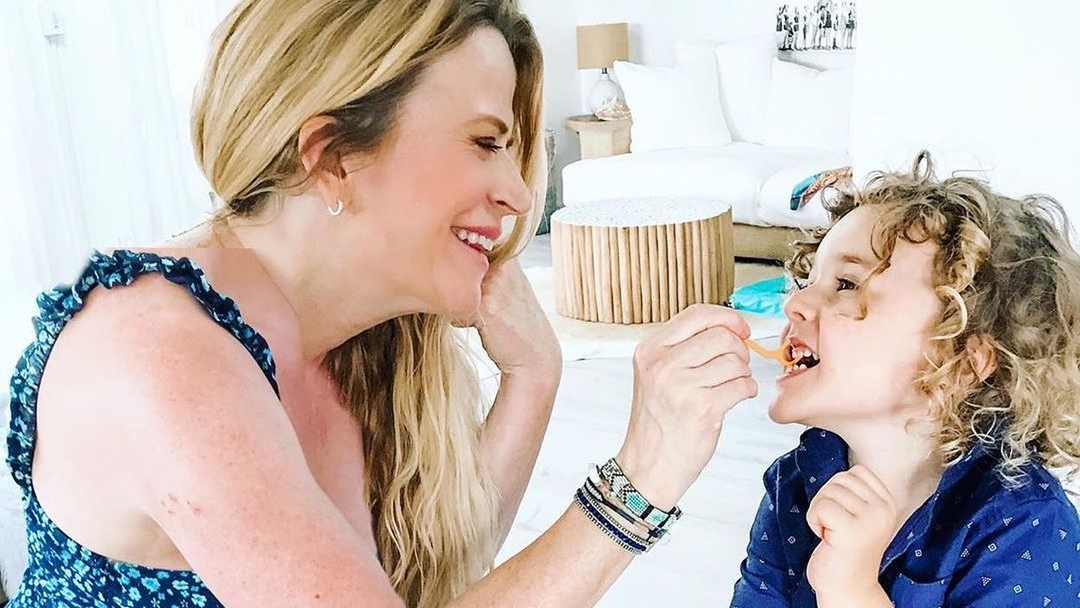
The Ins and Outs of Flossing for Kids
Share
Flossing is one of those self-care activities you grow up being told you need to do, without ever being given an understanding of why you should do it. For many years, the importance of this task eluded me until I went to dental hygiene school. During my education, and in the years since, I have gained a complete understanding of why flossing is important, and I would like to share this knowledge with you.
In this post, I’ll help you gain a better understanding of why you should start flossing your little one’s teeth. I’ll also answer the most common questions I receive about performing this task, and I’ll do it all in 4 simple steps. Are you ready? Let’s get started.
Why Do I Need to Floss My Child’s Teeth?
Flossing is necessary to remove a bacterial biofilm, called plaque, which collects on the surfaces of the teeth. Plaque is always forming in our mouths -- yes, even in your child’s mouth. It is formed by the mixing of our saliva with food and drink particles. According to MouthHealthy, when this plaque is not thoroughly removed from the teeth, it can lead to cavities as well as gingivitis in the gums.
For thorough removal of plaque, a multi-step approach is indicated. This is where brushing and flossing come into play.
Wait, why do I need to do both? When teeth are so close together they touch, the bristles of a toothbrush cannot reach into this area to clean it adequately. That is where flossing comes in to play. Think of it like this -- toothbrushing removes plaque from the front and back surfaces of the teeth and flossing removes plaque from the sides.

How Do I Know Which Teeth to Floss?
Once your child has two teeth that touch, it’s time to start flossing! This need will vary for each child based on their own unique spacing between teeth.
Within your child’s mouth, there may be areas which require flossing and areas that do not. Look at the picture below, for example. Do you notice the spacing between this baby’s top two front teeth? Flossing is not indicated here unless food or debris is visibly stuck between the teeth. Now, do you notice the baby’s bottom two front teeth in the very middle? Flossing is indicated here since the teeth are touching one another.
A word of note, the need to floss new areas will change over time as more teeth start to emerge. With each additional tooth that grows in, your child’s teeth will begin to grow closer together. Eventually, you may notice the need to floss new areas of the mouth which did not require it before.

Which Products should I use?
Your child very much depend on you – yes, you! Whatever will make the task of flossing more do-able for you is the product that is best. In my experience, when flossing feels like hard work, people are less likely to do it. The goal here is to eliminate as many obstacles as you can to ensure this important job gets done.
You have two options for flossing your little one: traditional string floss and dental floss picks.
Traditional string floss is the tried-and-true method of plaque removal but may be difficult to use on a squirming little one. This option may be more appropriate for an older child, probably age 7 or older.
In our household, I favor using Grin Natural dental floss picks to clean between my 5 year old son’s teeth for their convenience and ease of use. They also do a very thorough job at plaque removal, which is the goal. The added benefit is they are easy for my son to hold and use as he practices this important skill on his own.

When Should I Floss My Child’s Teeth?
Aim for once a day, ideally at night before putting your child to bed. Your ability to do this will very much depend on what works best for you and your schedule. Again, the goal here is to remove barriers which make the task of flossing impossible for you, since you are the one completing the task for your child. According to the American Dental Association, the “best time to floss is the time that fits well with the individual’s schedule.”

About the author
Katie Steger, BSDH, is a dental hygienist and mom and the founder of @healthyteeth.fortots, a platform designed to provide early childhood oral health education and support to parents. Katie is passionate about oral health education, the impact of nutrition on the developing dentition, and educating parents and families on strategies to make oral hygiene a priority.
